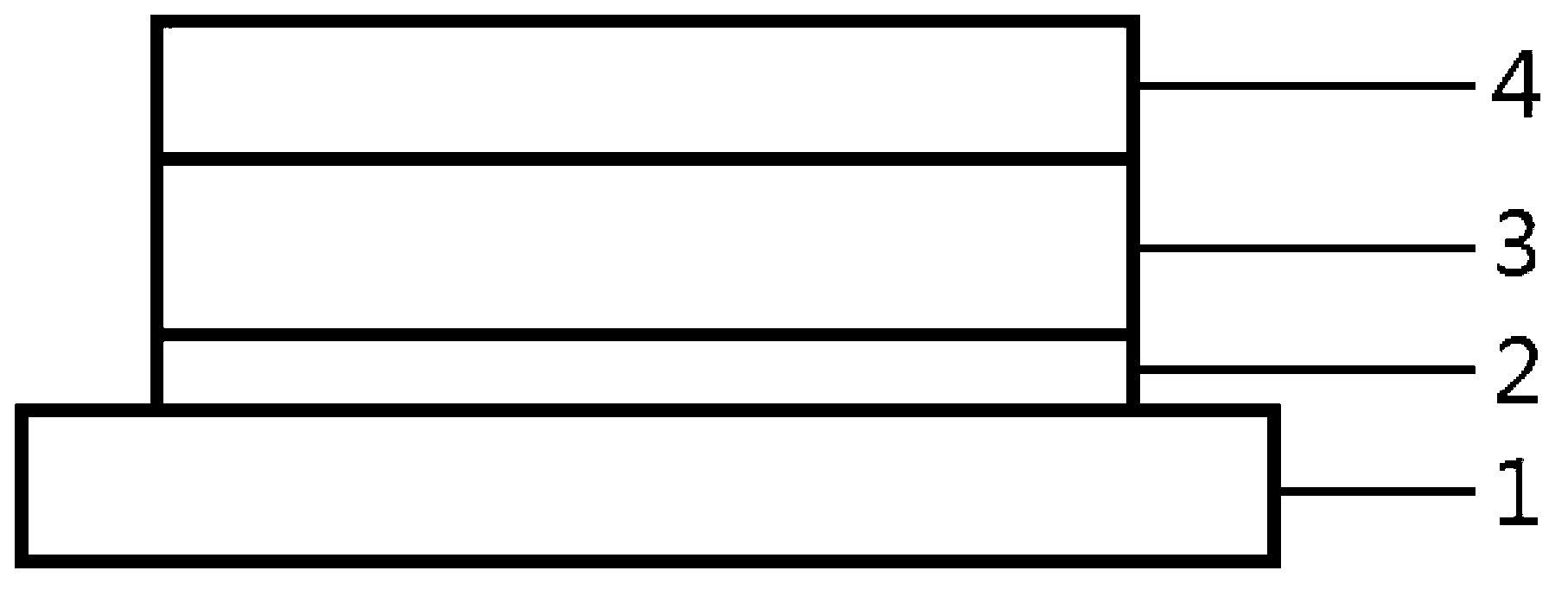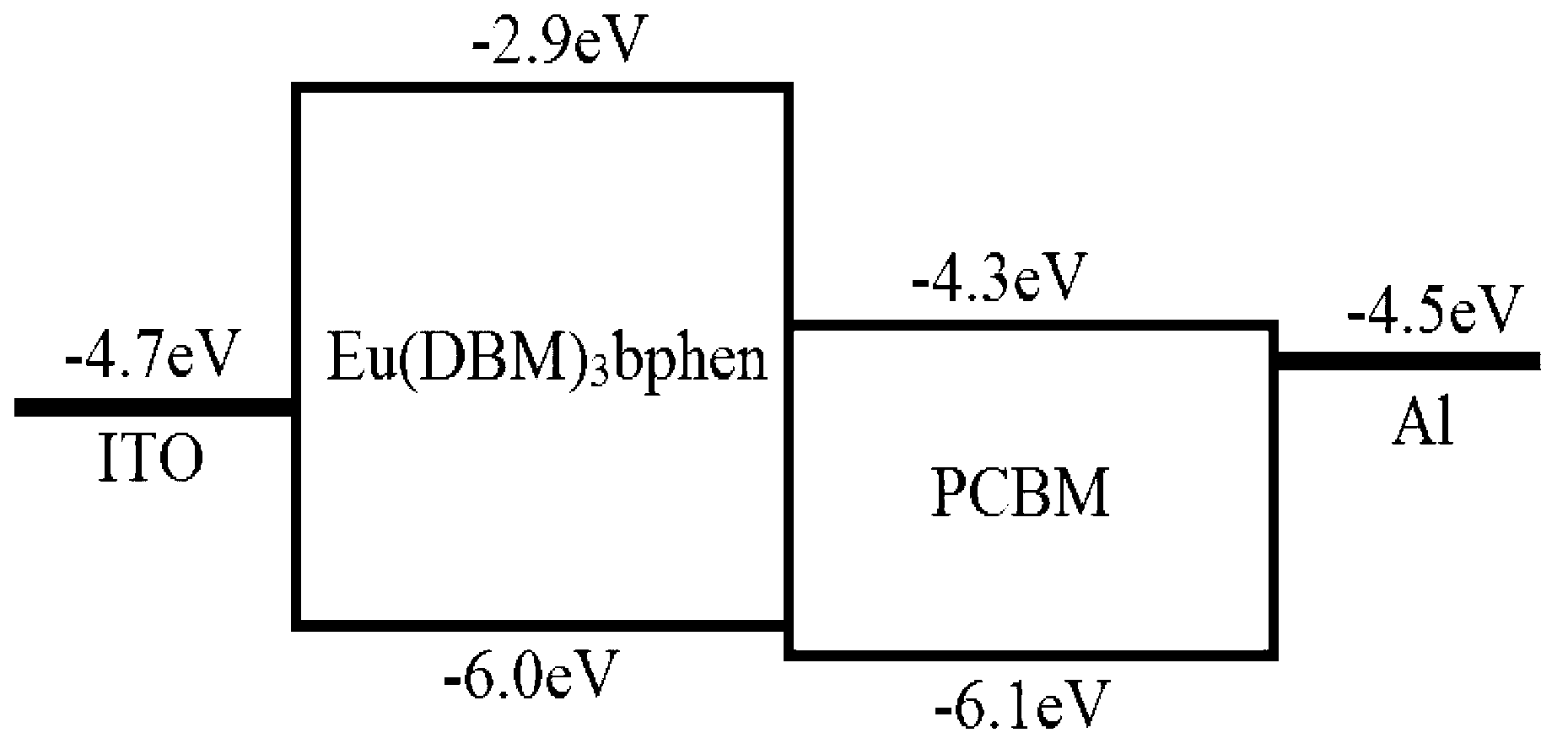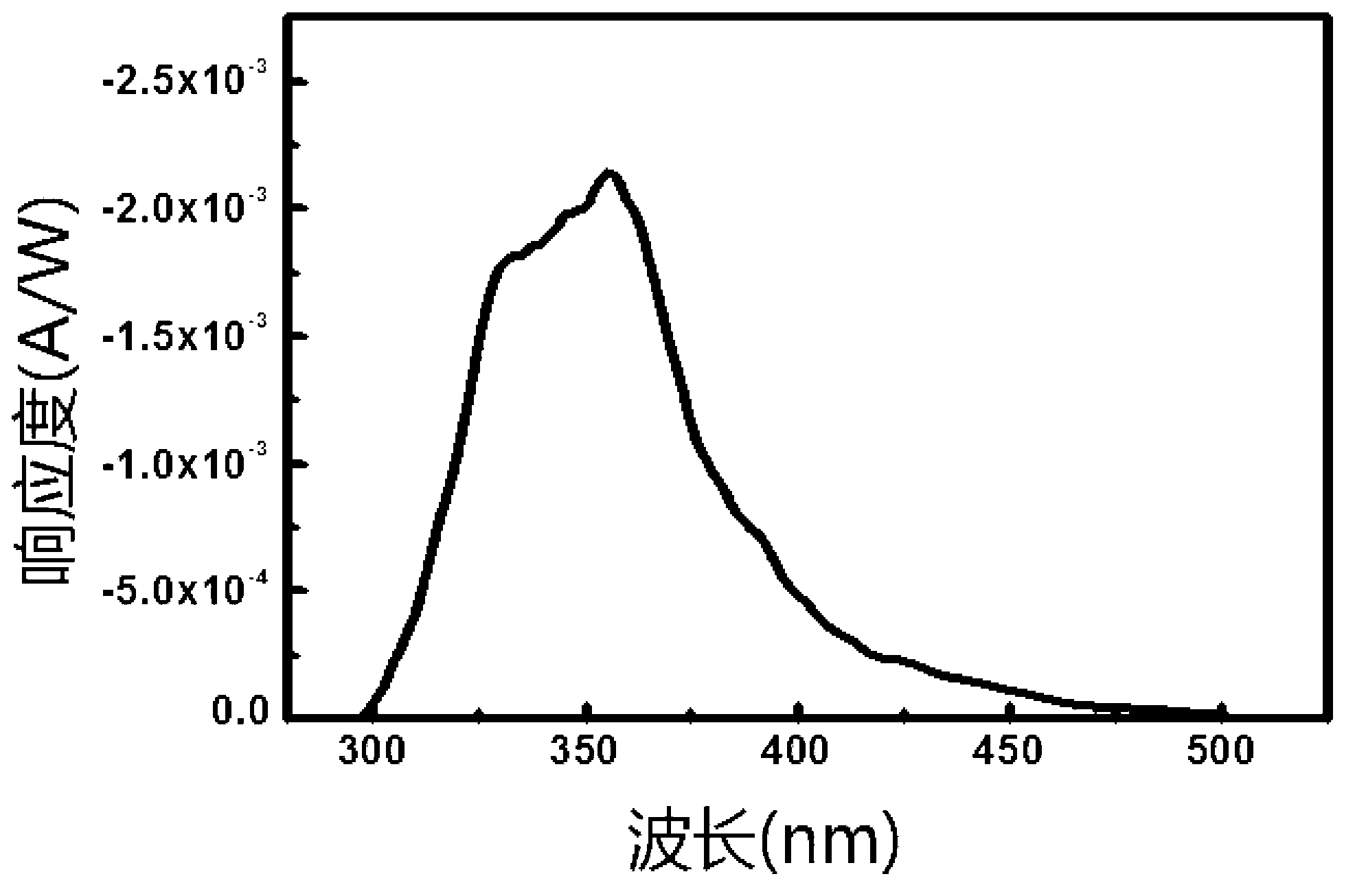Light-blind organic ultraviolet detection device based on rare earth complex
A technology of rare earth complexes and devices, applied in the field of photodetectors, can solve the problems of high cost, complicated manufacturing process, unsuitable for large-area devices, etc., and achieve the effects of low cost, simple synthesis and great research significance
- Summary
- Abstract
- Description
- Claims
- Application Information
AI Technical Summary
Problems solved by technology
Method used
Image
Examples
Embodiment 1
[0022] A light-blind organic ultraviolet detection device based on rare earth complexes, such as figure 1 , the structure of the device includes a transparent glass substrate 1, a transparent electrode 2, an organic layer 3, and a metal electrode 4; the transparent electrode 2, the organic layer 3, and the metal electrode 4 are sequentially prepared on the transparent glass substrate 1; the transparent electrode 2 is an oxide The indium tin (ITO) electrode, the metal electrode 4 is an Al electrode.
[0023] The organic layer 3 is 3 dibenzoylmethane 4,7-diphenyl-1,10-o-phenanthroline europium (Eu(DBM) 3 bphen) and [6.6]-phenyl-C61-butyric acid methyl ester (PCBM) blend film.
[0024] A method for preparing a light-blind organic ultraviolet detection device based on a rare earth complex, comprising the following steps:
[0025] Step 1 Soak the glass substrate coated with indium tin oxide (ITO) in deionized water and absolute ethanol respectively, and clean it with an ultrasoni...
Embodiment 2
[0029] A light-blind organic ultraviolet detection device based on rare earth complexes, such as figure 1 , the structure of the device includes a transparent glass substrate 1, a transparent electrode 2, an organic layer 3, and a metal electrode 4; the transparent electrode 2, the organic layer 3, and the metal electrode 4 are sequentially prepared on the transparent glass substrate 1; the transparent electrode 2 is an oxide The indium tin (ITO) electrode, the metal electrode 4 is an Al electrode.
[0030] The organic layer 3 is 3 dibenzoylmethane 1,10-phenanthroline terbium (Tb(DBM) 3 phen) and [6.6]-phenyl-C61-butyric acid methyl ester (PCBM) blend film.
[0031] A method for preparing a light-blind organic ultraviolet detection device based on a rare earth complex, comprising the following steps:
[0032] Step 1 Soak the glass substrate coated with indium tin oxide (ITO) in deionized water and absolute ethanol respectively, and clean it with an ultrasonic cleaner. After...
Embodiment 3
[0036] A light-blind organic ultraviolet detection device based on rare earth complexes, such as figure 1 , the structure of the device includes a transparent glass substrate 1, a transparent electrode 2, an organic layer 3, and a metal electrode 4; the transparent electrode 2, the organic layer 3, and the metal electrode 4 are sequentially prepared on the transparent glass substrate 1; the transparent electrode 2 is an oxide The indium tin (ITO) electrode, the metal electrode 4 is an Al electrode.
[0037] The organic layer 3 is 3 dibenzoylmethane 1,10-phenanthroline europium (Eu(DBM) 3 phen) and [6.6]-phenyl-C61-butyric acid methyl ester (PCBM) blend film.
[0038] A method for preparing a light-blind organic ultraviolet detection device based on a rare earth complex, comprising the following steps:
[0039] Step 1 Soak the glass substrate coated with indium tin oxide (ITO) in deionized water and absolute ethanol respectively, and clean it with an ultrasonic cleaner. Afte...
PUM
 Login to View More
Login to View More Abstract
Description
Claims
Application Information
 Login to View More
Login to View More - R&D
- Intellectual Property
- Life Sciences
- Materials
- Tech Scout
- Unparalleled Data Quality
- Higher Quality Content
- 60% Fewer Hallucinations
Browse by: Latest US Patents, China's latest patents, Technical Efficacy Thesaurus, Application Domain, Technology Topic, Popular Technical Reports.
© 2025 PatSnap. All rights reserved.Legal|Privacy policy|Modern Slavery Act Transparency Statement|Sitemap|About US| Contact US: help@patsnap.com



